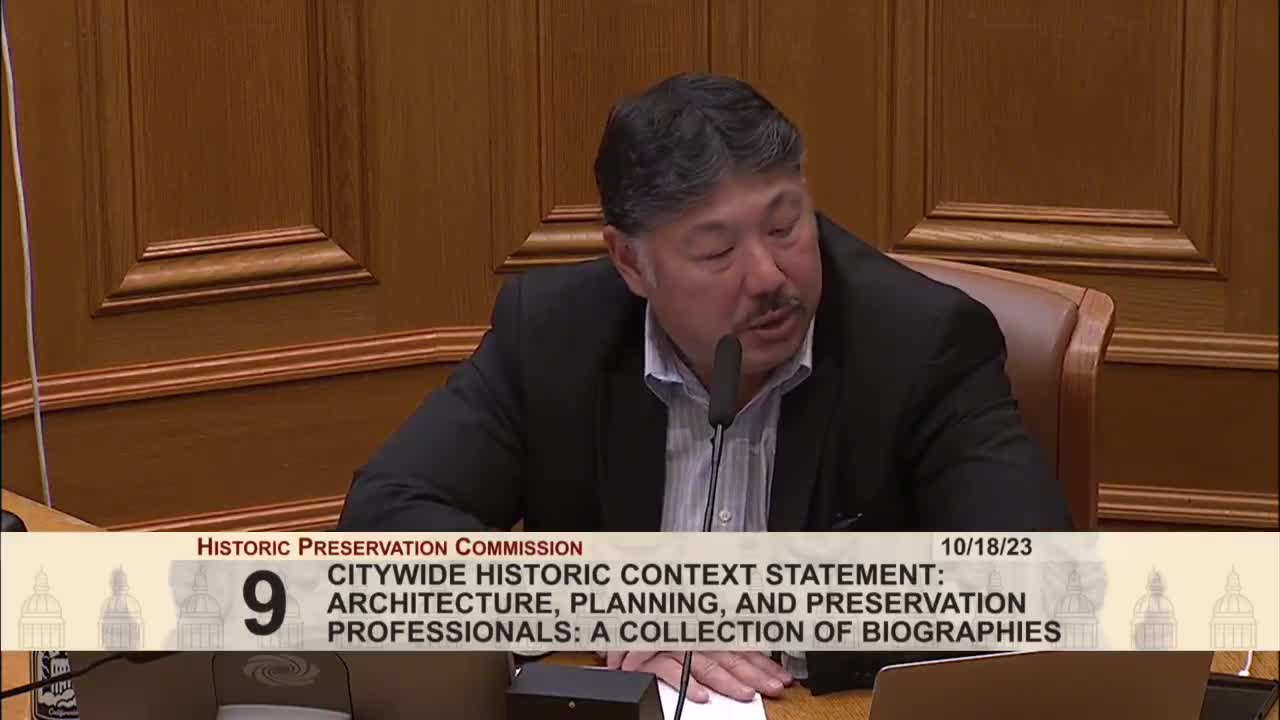Kate Connor presents state density bonus law impact on San Francisco housing projects
October 18, 2023 | San Francisco City, San Francisco County, California
This article was created by AI summarizing key points discussed. AI makes mistakes, so for full details and context, please refer to the video of the full meeting. Please report any errors so we can fix them. Report an error »

In a recent meeting of the San Francisco Planning Commission, key discussions centered around the state density bonus law and its implications for housing development in the city. Kate Connor, manager of housing implementation programs, provided an in-depth overview of the law, which was established in California in 1979 to incentivize the inclusion of affordable housing units in new developments.
The state density bonus law allows developers to increase the number of units in their projects if they include affordable housing. Specifically, projects with five or more units that provide affordable units on-site for at least 55 years can qualify for additional density. This law is crucial for addressing San Francisco's ongoing housing crisis, as it encourages the construction of more affordable units amidst rising demand.
Connor explained that the law includes provisions for incentives and concessions, which can help reduce project costs. For instance, developers may receive waivers from certain zoning requirements, such as height restrictions, to accommodate the additional units. However, the city's discretion in denying these requests is limited; waivers can only be denied if they pose a specific adverse impact on public health or safety.
The intersection of the state density bonus law with San Francisco's inclusionary housing program was also highlighted. For example, a project with 100 units must include 20% affordable units to qualify for a density bonus. This relationship underscores the city's commitment to maintaining affordable housing while navigating the complexities of state regulations.
Additionally, the meeting addressed the implications of the Housing Accountability Act, which restricts local jurisdictions from denying or reducing the density of projects that comply with code. This act further limits the Planning Commission's ability to exercise discretion over density bonus projects, reinforcing the need for objective standards in evaluating such developments.
The discussion also touched on the challenges faced by the Historic Preservation Commission in balancing development with the preservation of historic resources. Connor emphasized the importance of creating objective design standards to ensure that preservation goals are met without compromising the feasibility of new housing projects.
As San Francisco continues to grapple with housing shortages, the insights shared during this meeting highlight the critical role of state laws in shaping the city's development landscape. The Planning Commission's ongoing adaptation to these regulations will be vital in fostering a more inclusive housing environment while preserving the city's unique character. The meeting concluded with an invitation for public comments, reflecting the commission's commitment to community engagement in the planning process.
The state density bonus law allows developers to increase the number of units in their projects if they include affordable housing. Specifically, projects with five or more units that provide affordable units on-site for at least 55 years can qualify for additional density. This law is crucial for addressing San Francisco's ongoing housing crisis, as it encourages the construction of more affordable units amidst rising demand.
Connor explained that the law includes provisions for incentives and concessions, which can help reduce project costs. For instance, developers may receive waivers from certain zoning requirements, such as height restrictions, to accommodate the additional units. However, the city's discretion in denying these requests is limited; waivers can only be denied if they pose a specific adverse impact on public health or safety.
The intersection of the state density bonus law with San Francisco's inclusionary housing program was also highlighted. For example, a project with 100 units must include 20% affordable units to qualify for a density bonus. This relationship underscores the city's commitment to maintaining affordable housing while navigating the complexities of state regulations.
Additionally, the meeting addressed the implications of the Housing Accountability Act, which restricts local jurisdictions from denying or reducing the density of projects that comply with code. This act further limits the Planning Commission's ability to exercise discretion over density bonus projects, reinforcing the need for objective standards in evaluating such developments.
The discussion also touched on the challenges faced by the Historic Preservation Commission in balancing development with the preservation of historic resources. Connor emphasized the importance of creating objective design standards to ensure that preservation goals are met without compromising the feasibility of new housing projects.
As San Francisco continues to grapple with housing shortages, the insights shared during this meeting highlight the critical role of state laws in shaping the city's development landscape. The Planning Commission's ongoing adaptation to these regulations will be vital in fostering a more inclusive housing environment while preserving the city's unique character. The meeting concluded with an invitation for public comments, reflecting the commission's commitment to community engagement in the planning process.
View the Full Meeting & All Its Details
This article offers just a summary. Unlock complete video, transcripts, and insights as a Founder Member.
✓
Watch full, unedited meeting videos
✓
Search every word spoken in unlimited transcripts
✓
AI summaries & real-time alerts (all government levels)
✓
Permanent access to expanding government content
30-day money-back guarantee

